THE VALLEY OF THE GEYSERS
Our One Day Helicopter Visit
Why were passengers in such a desperate hurry to board our helicopter? People were not merely walking fast, nor even just jogging. Many were in full flight, running as hard as they could. Pushed aside in the rush, we were to soon find out why. And we were soon to have the dubious pleasure of meeting The Princess.....
A day visit to the Valley of the Geysers was an optional extra on our tour. From what we had read, it was an absolute "must do, must see" excursion. At a considerable cost of around AUD 800 per person it had better be good, we thought. But we reasoned, if we had come this far, it would be a great pity to miss a journey over some of Kamchatka's many ancient and active volcanoes or seeing the Valley of the Geysers, one of Kamchatka's most famous attractions.
The only means of reaching the remote Valley of the Geysers in the Kronotsky Biosphere State Reserve is by helicopter. Our one-hour journey was to take us some 200 kilometers north of Petropavlovsk-Kamchatsky over some of the most breathtaking volcanic scenery imaginable. Our tour included a visit to the Valley of the Geysers as well as a landing within the Uzon Caldera, the massive crater remains of an ancient volcano.
Ten of our eleven tour members took the Valley of the Geyser option, joining another tourist group to make up the forty or so required helicopter numbers. To Hilde's disappointment, she was the only member that day to choose the Avacha Bay cruise. By the time she realised, it was too late for her to change options.
The Valley of the Geyser tour was led by a separate contracted tour and flight company. Our guide Alla did not accompany us. Kurril, a Russian, English speaking guide was provided by the contracted company, Vityaz Travel (www.vityaz.travel).
Tectonic and Seismic Activity of Kamchatka
Kamchatka peninsula is one of the most seismically unstable regions in the world. A seething mass of boiling geo-thermal cauldrons, spluttering mud pot pustules, detonating geysers and soaring ancient and active volcanoes, it also holds infamous claim to being one of the world's most earthquake prone regions.
What is the cause for such intense geological instability? The answer lies in the peninsula's precarious strategic location, squeezed between many of the world's most volatile tectonic plates....
The 1,250-kilometer long peninsular sits at a unique junction of a triple plate collision between the North American, the Pacific and the Eurasian (tectonic) Plates. To add to its vulnerability, Kamchatka is part of what is known as the "Okhotsk Block" (a plate located primarily under the Okhotsk Sea, but also the Kamchatka Peninsula, Sakhalin Island, and the northern half of Japan) which is being literally thrust into the Eurasian Plate. It also borders and is strongly influenced by the unstable "Bering Block" (a plate which defines the area north of the Aleutian chain of volcanic islands). And to add to the peninsula's perilous situation, is emerging evidence that the Hawaiian - Emperor Seamount Island chain (a vast underwater mountain region of islands seamounts, atolls, shallows, banks and reefs that run south-east to north-west beneath the northern Pacific Ocean) is also sub-ducting under Kamchatka.
A recipe for seismic cataclysm? Well yes, you would think so....
Valley of the Geysers
The Valley of the Geysers is the only geyser field in Eurasia. Home to over 200 geysers, and the second largest concentration in the world (the largest being the US Yellowstone National Park), it extends along an eight-kilometer basin on the banks of the ever deepening Geysernaya River, into which geo-thermal waters flow from the relatively young strato-volcano*, Kikhpinych.
*A strato-volcano, also known as a composite volcano, is a conical volcano built up by many layers of hardened lava, tephra (volcanic fragments), pumice, and volcanic ash. They are typically conically perfect in shape and are the deadliest of all volcano structures.
Interestingly, the geysers of Kamchatka remained hidden, a world secret until their discovery in 1941 by Russian scientist Tatyana Ustinova. So remote was the area that although Tatyana's findings were published some 14 years later, there was little exploration of the area until 1972. Since the 1980's however, the area has become a world renowned attraction and in 2008, the Valley of the Geysers was elected as one of Seven Wonders of Russia. Even still, today only a few thousand people visit the Valley each year.
And how fortunate were we to have the opportunity to witness this extraordinarily unique seismic phenomenon?
Our Helicopter Voyage - and The Princess....
Our helicopter which seated around 40 passengers, was set up with a two, two-seat arrangement alongside a central aisle, which of course meant that only half the passengers had a window seat. Perhaps I should describe the windows as more like circular port holes, as they were very small. And with the reflection and slight opaqueness of the double glass, it was quite difficult for the non-window seated person to see out. Of course, the first passengers scored the window seats! We weren't worried however as surely we would be able to fairly swap around on our different legs of our journey.
An attractive but tough faced, young blonde woman, perhaps aged in her mid twenties, sat in the window seat next to me, obsessively taking selfies as our helicopter prepared for take-off. There was certainly no opportunity for smiles or any niceties; she was far too busy arranging her hair and face to suit her self-photos. And from the very beginning, there was no way this insolent young woman was going to share the window. Equipped with a phone, video and even an iPad camera, she made sure she took up the entire window - for the entire flight. With the phone placed flat against the glass with her left hand, I was quite amazed how on earth she managed with the other to master both the camera and the video for the remainder of the window.
Kurril our guide was very efficient, explaining in Russian then English, information about safety regulations, details of our helicopter excursion and of the geological nature of the Valley of the Geysers. In contrast with our coming death defying helicopter flights, we were provided with good ear phones. Any details after take off were provided by means of hand held written posters. Hearing was simply impossible - which was just as well for our Princess.
Blessed with a brilliantly clear, sunny day, our flight quickly took us skyward through valleys lined with steep sided volcanic peaks; their crevasses still filled with dazzling shards of unmelted winter snow. I was amazed the abundant micro-environments on these mountains were so apparent. Only the more sheltered mountainsides and deep crevasses could support any tree life while tough short woody growth and tundra like vegetation hung tenaciously to impossible, ash clad inclines. As our flight took us over ancient calderas, perfect volcano cones loomed in the distance; ominously foreign yet starkly beautiful.
I had given up even trying to take photos and had handed the camera over to Alan. Just as I did, we passed on our right-hand side the smoldering perfect peak of the active Kariymsky Volcano, its smoky spume forming a classic black shrouded veil. At a height of 1,345 meters, Kariymsky is a prototypical strato-volcano and is the most active of all volcanoes on the Kamchatka Peninsula; its last major eruption being in 2006.
Soon after Kurril held up a sign stating we were about to fly over the famous Maliy Semychik 1,520 meter strata-volcano. Alla had told us that if the weather permitted (which was apparently rarely), we may be able to view the caldera lake on this stunning volcanic peak. And if we were so lucky, it may be seen as pure white or even a brilliant turquoise blue. We were in unbelievable luck. The simply stunning lake was a milky, icy blue; the walls of which we were able to view in striking detail. Alan, sitting next to our user-friendly tour member Alina, was able to take some most exquisite photographs of these gorgeous peaks.
The Valley of the Geysers
Fifteen minutes later, we flew into a richly verdant, steam filled mountain lined basin. We had arrived at the wonderful Valley of the Geysers. We were again surprised at the abundant vegetative growth; deeply wooded slopes interspersed with rocky outcrops and open fields of tall grasses and cottage garden wild flowers; an artist's palate and a botanist's paradise.
The most apparent landmarks were several major landslips which had scoured away huge chunks of the surrounding mountains. On June 3, 2007 a fateful mountainside collapse such as this resulted in a catastrophic mud flow which inundated two thirds of the Geysernaya Valley. The colossal 20 million cubic meter landslide was the largest ever witnessed in Kamchatka (and one of the largest ever documented in Russia) sadly covering some of the most spectacular sites of the valley and forming a huge new lake. For us, it was highly reminiscent of the cataclysmic landslide which formed the massive Lake Attabad, in northern Pakistan effectively cutting the country into two portions.
I have never hit anyone in my life - and most probably never will. But I certainly came close to giving my Princess friend a really good shove as she greedily used all her cameras across the window for our entire descent into the valley.
On our landing, I fronted our guide Kurril, asking him if the window seated passengers could swap with the less fortunate (aka me) for other legs of the journey. After all, I too had paid AUD 800 for the trip. With a distinctly "I don't want to know about this" look, he brushed the matter off, telling me I should talk with our own guide. "But she's in Petropavlovsk, and you are our guide here" I protested. Needless to say I got nowhere. The Princess marched off with her young friend - who not surprisingly had also scored a window seat.
Thankfully, my mind was almost immediately distracted by our stunning surrounds. The geyser filled valley was simply spectacular. Furthermore, the Kronotsky Biosphere State Park has equipped the Valley with excellent amenities and facilities, with wide elevated wooden board walks, viewing stations, very good signage in both Russian and English as well as clean toilets and numerous garbage bins. The Valley park is closed in winter when the entire area is covered in some two meters of snow. At this time, there are no helicopter flights either in or out.
Kurril constantly reminded us to keep together as a group and to stay religiously on the board walks. Not only were the surrounding grounds highly unstable, but the area was intensively inhabited by Kamchatka brown bears. These guides were really serious about bears. Our group was guided by two rangers, one leading and one at the rear, each armed with massively over-sized shotguns.
It was quite a shock for us. We have no bears (koalas are not really bears...) in Australia and we have never had to think about them. We got the message though. As we walked along the board walks, massive plate sized bear paw prints revealed that there must be many, very large bears around. Apparently bears really love the mud holes and lakes, and their muddy paws were testament to their very recent baths.
In addition to the bears, the Valley of the Geysers houses an array of rare animal and bird species, including ermines, hares, falcons and tundra ptarmigans. Plant life was also abundant with luxuriant heavily flowering cottage garden species, buttercups, wild roses, cow berries, blueberries, wild cherries and beautiful ferns. With the pretty river, spewing steamy geysers, belching mud pots and hot springs, the area was a truly natural water featured garden.
Like most of Kamchatka in late summer, the geyser area also abounds with blood sucking, mega friendly mosquitoes and midges. It was our first real introduction to these horrible pests and although there were comparatively few** in the surrounds of the Valley of the Geysers, there were enough to make walking uncomfortable without insect repellent, and a degree of hand slapping and waving.
**It was probably a very good thing that at that stage, we had absolutely no idea as to what we would be in for during the next few days!
Our walk took us down to the main geyser area, and a viewing platform for one of the more famous attractions The Bolshoi (Big) Geyser. So timely are the explosive steam jets from this massive geyser, that Kurril was to accurately announce the next eruption would be in just fifteen minutes. There was no guessing as to the pair who immediately pushed their way down to the viewing arena to sit right in the middle of the platform, inhibiting most people from taking the best photo shots.
The process of forming either hot springs or geysers is complex. Magma, located in the ground, heats water and surrounding porous stones, which leads to a release of energy, forcing underground water flow into action. If the water moves freely between the stones, then it just flows out without constriction, forming as a result a hot spring. Conversely, where ground waters meet a constricting obstacle such as densely packed stones, then the flow becomes subject to great pressure, eventually released and erupting as a powerful jet known as a geyser. It is interesting to note, that like people, each geyser has its own "personality", eruption patterns and geyser heights.
The Bolshoi Geyser was moody. Steam filled eruptions were followed by total inaction. In a very short space of time, a number of surrounding smaller geysers began to erupt, almost as if a geyser-ish conversation was taking place. In moments, the whole hill side appeared to boil and choke. Finally, Bolshoi exploded; a searing spear of boiling steam jettisoning some twenty meters upwards. Needless to say, any photographing of the final eruption was almost impossible. It was like being in a sauna - and we and the camera were all very wet!
Our wanders took us to the much-famed thermal slopes known as the "Vitrazh" or "Stained Glass Wall", one of the most beautiful thermal slopes of the Valley of the Geysers. Detailed signage provided all the names of sites of the various numerous geysers. I must admit that it was difficult to decipher which was which, but the views of these spewing geysers were quite breathtaking.
A roar from a site we could not see from our platform, told us in no uncertain terms it was the angry eruption from the mighty geyser known aptly as the Gate of Hell!
Out next viewing station which involved a very steep incline, revealed two extraordinary water features; a muddy thermal pond and an icy blue, toxic looking acid lake, each smoldering in the steamy fumes from the surrounding geysers. Surrounding the lakes were heaps of belching mud pots, making for quite a surreal landscape. But even more fascinating for us was the incredibly tough vegetation. Looking totally at home in what looked like the most inhospitable environment a plant could ever wish for (or dread...). Botanists at heart, we could not fail to consider what a wonderful scientific study these amazing species would make.
It is well to know that if you are visiting the Valley of the Geysers, you need to be reasonably fit. The steps to the top of the valley are incredibly steep and numerous. We are well used to precipitous climbs at our headland home, and my puffing voice into my voice recorder on the way was clear evidence of the very steep climb to the top viewing station....
As we returned to our helicopter we came upon a commemorative plaque to the discoverer of the Valley of the Geysers Tatyana (Ivanova) Ustinova. Looking at the old sepia photographic reproduction of this (then) young woman astride a rangy grey pony accompanied by a heavily armed guide, gave us a sense of real sorrow that her discovery of the first ever identified geysers in Kamchatka was left for so many years without further investigation.
A translated plaque script written by a fellow traveller detailed her incredible discovery:
"....We sat on a stone, snacked - cookies, butter, tea. We had enough time only for returning to our camp by night. I say to Tatyana Ivanova 'I finish my cigarette not to stop on the way, and we go". And suddenly steam gushed on the opposite side, a jet of water got off with a spurt and roared slantwise over the river, just in our direction. We hugged the rocky bank. We felt a breath of hot steam. What could it be? We found a way to cross the river. Its water was warm. We measured the temperature - 28 degrees! We began to look for the place where the fountain spurt came from and fund a crack among stones. The water was seething in the depth and little by little filling the crack, Then jets of water and steam spurt again... "It's a geyser indeed' said Tatyana Ivanova"
The Uzon Caldera
A seven-minute helicopter flight took us just twelve kilometers to the huge crater of Uzon Caldera.
The cauldron-like crater was formed about 40,000 years ago on the site of the Uzzone Volcano which was destroyed by a series of seismic eruptions. Powerful explosions left a crater with a diameter of about 10 kilometers and total area of 150 square kilometers, framed by steep ledges, in places reaching some 800 meters in height. The now ancient Uzon volcano has never erupted in human time and is now considered as fully extinguished.
Lake Dalny is located in the eastern part of Uzon caldera. The lake fills one of the largest explosion craters with diameter 1.65 km. Central Lake, one of the biggest and coldest lakes of the region is located in the western swamped part of caldera. Another lake known as Bannoe is also located on the caldera. Interestingly, it never freezes and its water temperature can reach as high as 40 degrees C, even during wintertime.
Like an open air museum, the Uzon Caldera is a fantastic "living display" of seismic features. At an elevation of around 1,600 meters, the crater was really like being on another planet; lunar landscapes pocked with steaming hot springs, deep fresh and acid lakes, boiling grey-white mud pots and thermal springs.
Again, the vegetation was absolutely fascinating; wild flowers, thorny woody dwarfed shrubs, wild cedars and some of the toughest tundra like grasses and lichens imaginable flanked the hostile springs and lakes.
And like the Valley of the Geysers, the caldera was well equipped with viewing platforms and boardwalks. Kurril stopped at one of the lakes to discuss recent scientific investigations of one of the lakes. Water samples were taken at a depth of 26 meters, then again at 36 meters. To the surprise of the scientific crew, the bucketed samples were laden with molten Sulphur, indicating that the temperatures in these relatively shallow depths had to be around 118 degrees C.
Our three-hour visit was interesting but seemed overly lengthy for the amount we could walk to and observe. We assume there may have been some technical problems as we were by then two hours overdue for our return to Petropavlovsk-Kamchatksy.
It had been an early start and a long day. Lunch was a very welcome surprise. By the mid-afternoon we were very pleased to be seated at a wooden table and enjoy a very lovely hot meal. We sat with two of our tour members Gabi and Josef. From Germany, they were good company and a pleasure to be with.
On our return flight, Alan nobly offered to sit in my seat next to our royal friend, while I sat next to the obliging Alina. Of course, there was no offer from any of the window seated passengers to exchange their seats, not did Kurril even mention it. And needless to say, there was no chance of Alan taking any photographs of our return flight....
It is a warning to prospective helicopter passengers of such an expensive tour that an entire helicopter experience could be ruined by just one passenger. I would hope however, that there are very few such selfish people who would venture to such a beautiful destination as the Valley of the Geysers.....
At the end of the day, the visit was fantastic and truly memorable. We were delighted that we took the option to visit the Valley of the Geysers and would strongly recommend this tour to all travellers to the Kamchatka Peninsula.

 Mil'kovo, Kamchatka Krai, Russian Federation
Mil'kovo, Kamchatka Krai, Russian Federation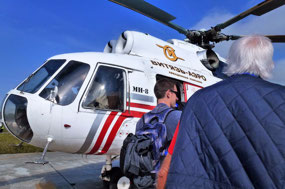
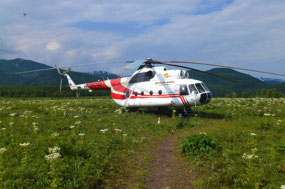
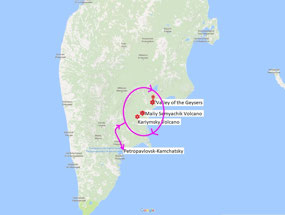
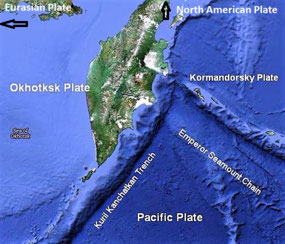
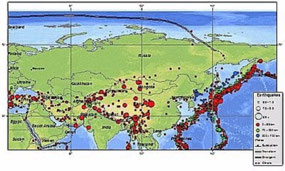
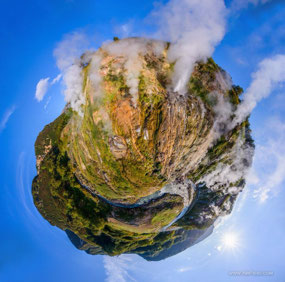

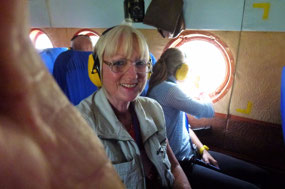
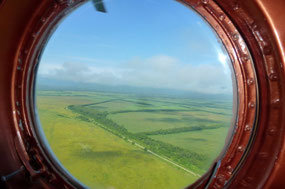
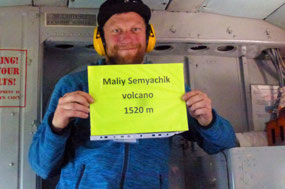
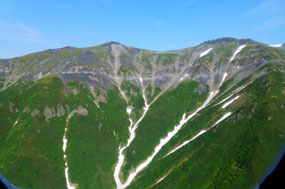
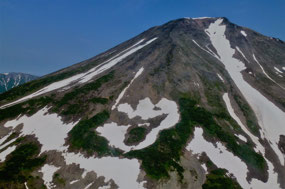
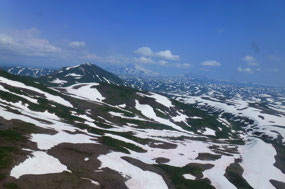
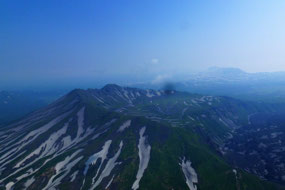
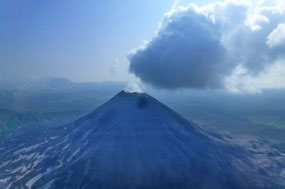
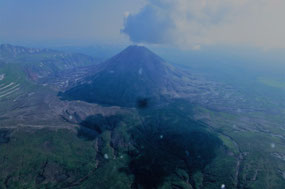
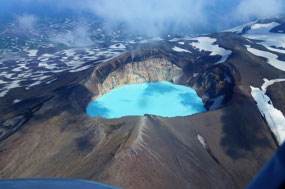
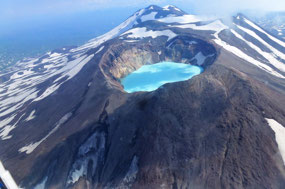
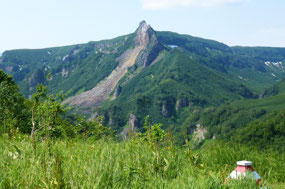
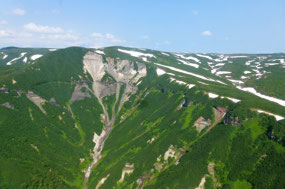

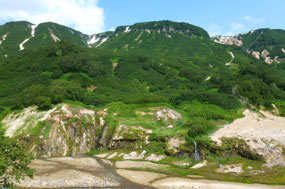
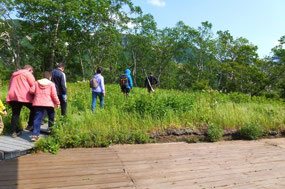
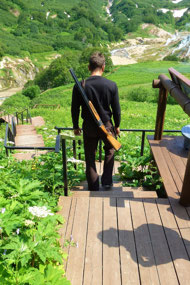
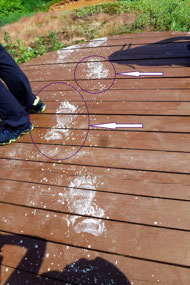
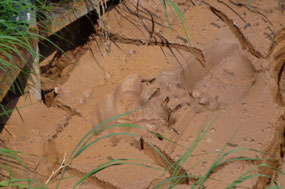
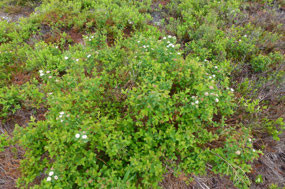

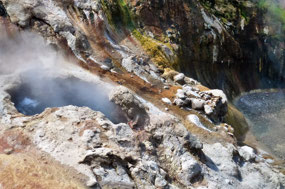
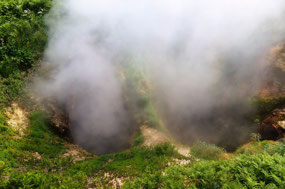
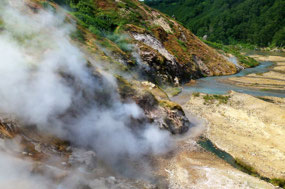
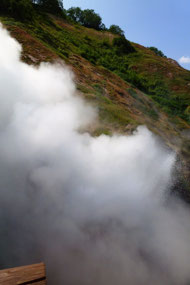
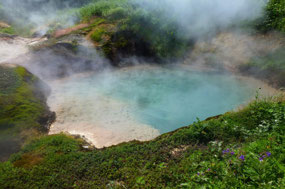
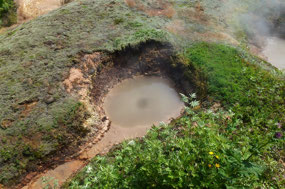
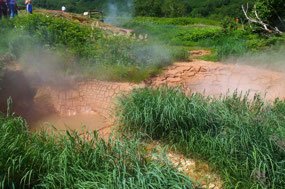
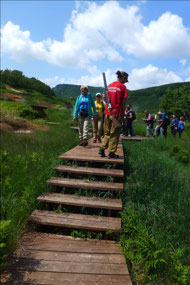
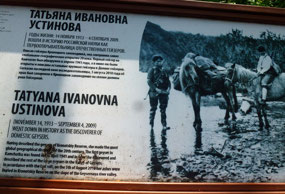
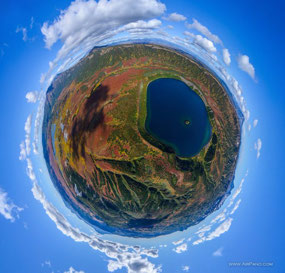
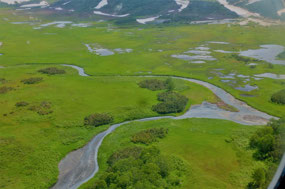
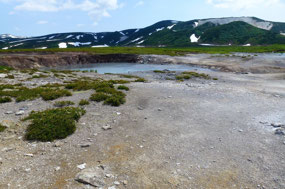
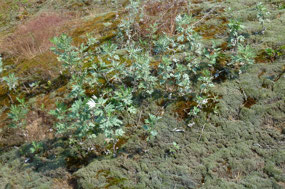
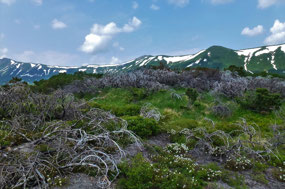

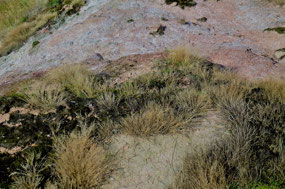
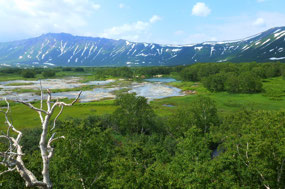
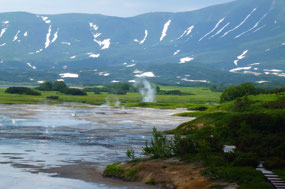
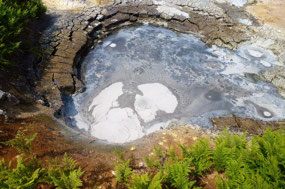

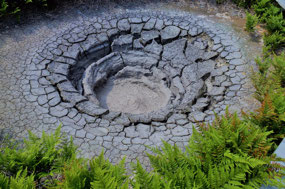
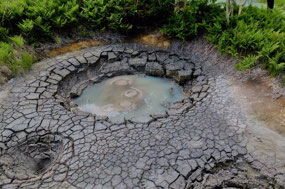
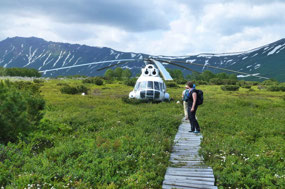
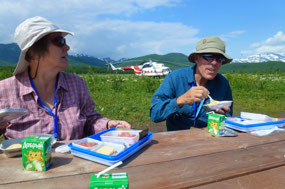
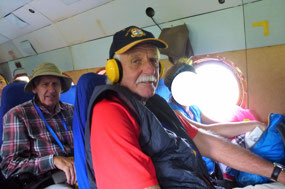
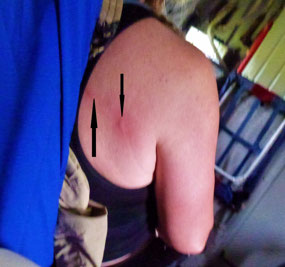




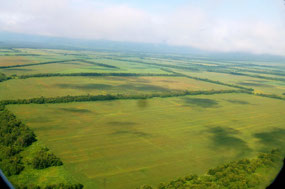
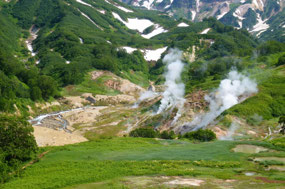

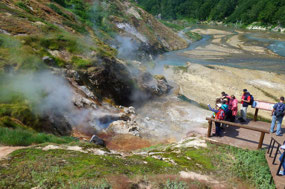
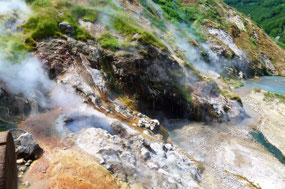
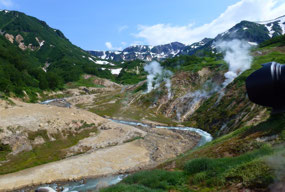

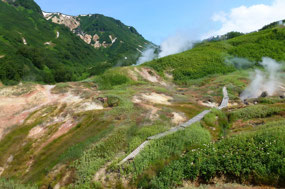
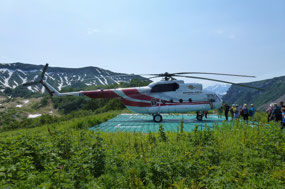
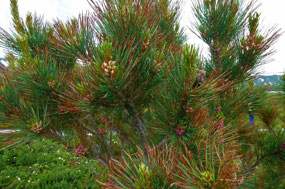
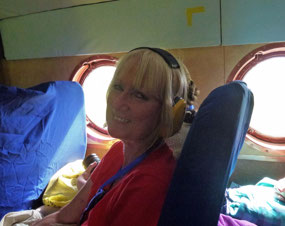
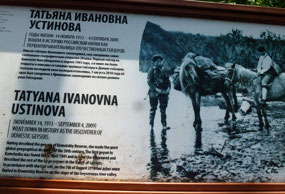
2025-05-23